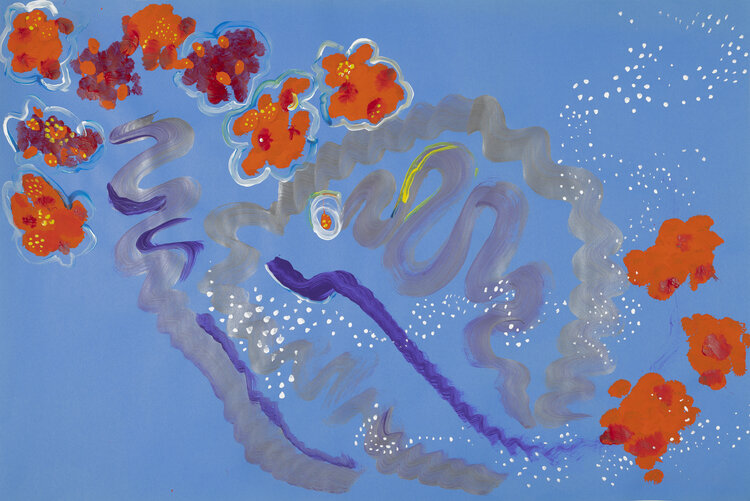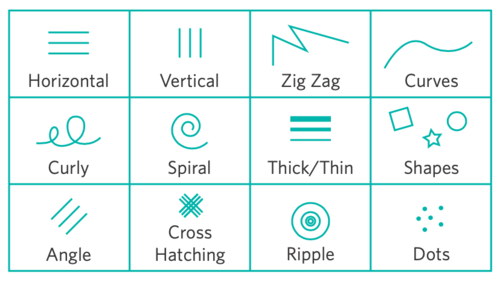This activity accompanies the Art on the Mind: Ten Years of Creative Aging exhibition at the Frye. In Creative Aging, art-making projects are designed to emphasize creative decision-making and the tactile experience of working with different art mediums. Such projects build self-confidence and foster a sense of play for people living with dementia. This activity allows a care partner to encourage creative exploration and experimentation with a person living with dementia and provides an opportunity for both to discuss and make art.

Kirsten Kinnan, Margot Hughes McDonald, and Emma Levitt Royer. Untitled, 2020. 36 x 24 in. Acrylic on paper, applied collaboratively in response to the rhythms of music. Photo: Jueqian Fang
This is a fun activity for a care partner and artist team or a small group. You’ll be listening to music and painting in response to what you hear. Download the activity card.
MATERIALS
-
Cardstock, poster board, or cardboard (the larger the piece, the more fun it will be!)
-
A selection of markers OR paintbrushes and water-based paint in any color(s)
-
Paper towels, containers for water, and water for brushes, if needed
WARM-UP (optional)
First, let’s take a look at different kinds of lines. Lines help us express different ideas and emotions.

How might you try to convey the following emotions using only lines and/or shapes?

PREPARATION FOR YOUR ART-MAKING TOGETHER
-
Place the cardstock, poster board, or cardboard in front of each artist.
-
Have markers or paint and paintbrushes on hand and ready to use. Make sure paper towels or rags are available if you’re using paint.
-
Select some music with a variety of tempos, genres, and moods as inspiration for yourself and your artist.
ACTIVITY INSTRUCTIONS
-
Turn on the music and use one marker or paintbrush to create some lines and/or shapes based on the music you hear. Does the music make you want to move to the beat? Sway from side to side? What happens when you use your marker or brush to tap out this rhythm or glide across the paper as you sway?
-
Change the music and switch to a new color. Try swapping papers with each other as the music changes and see what happens. It’s OK to draw or paint over each other’s work. Repeat as many times as you’d like.
-
When you and your artist are ready to stop, turn off the music and discuss the artwork you created together.
-
Hold up the work to be viewed from a few feet away. What do you see? How does what you see make you feel?
-
What happens when you rotate the work? Do you like it upside down?
-
How did it feel to paint on another person’s artwork? To paint to music?
-
To explore the exhibition, you can take a virtual tour of Art on the Mind, where you can see the artworks, read the wall texts and labels, and view photographs of the exhibition galleries.